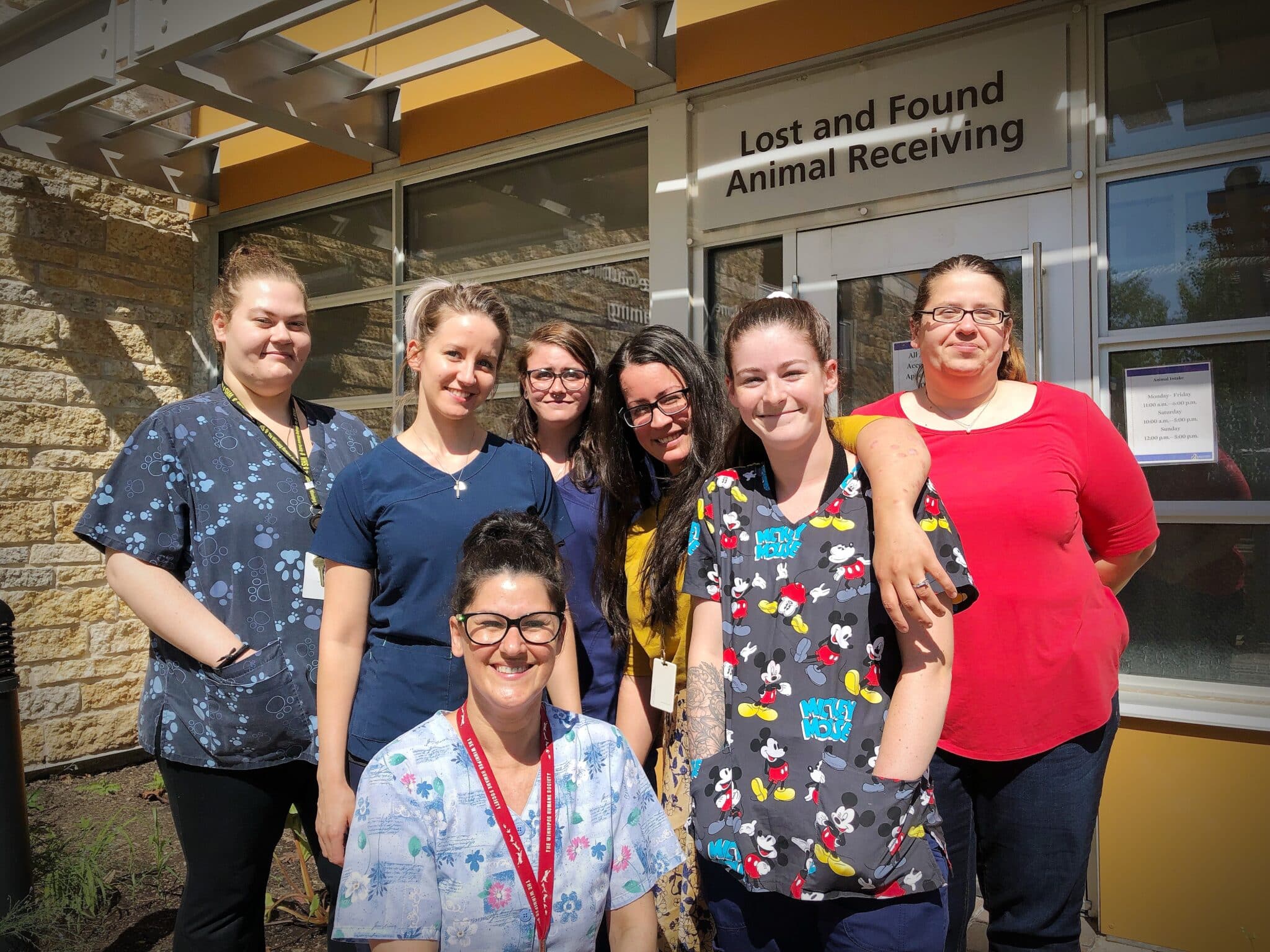
CEO Blog: Undercover Boss (not really) Series - Episode 1: Intake and Foster

The first stop in my quest to do as many front-line jobs as possible took me to the Intake and Foster Department. This is the area where stray animals are dropped off and animals with human caretakers are surrendered for various reasons: behavioural problems, people leaving town and unable to take the pet, people moving to a no-pet apartment, or those who cannot afford medical treatment. It is also the department that coordinates with our over 240 active fosters, scheduling pick-ups, follow-ups, drop-offs, etc.
This Department is led by Anja, and her assistant Manager, Audrey. Both have risen through the ranks and can be defined in one word: amazing. The day I visited I worked with Chloe, Cassidy, Laura and Michelle. They were all very welcoming and they had no problems bossing me around!
We started with Audrey teaching me what happens before we even open our doors at 11am. As the assistant manager, Audrey checks the files from the day before to make sure all data has been entered, she looks to see what may have come in overnight.
Right before opening time, the team reviews our daily appointment schedule. Around a year ago, the WHS changed our approach to “by appointment only”. There are many reasons why we made this change, the two critical ones is first the ability to better manage our space so we do not need to unnecessarily euthanize animals due to lack of space; and secondly for pets to spend the least amount of time possible inside a small carrier or a small cage before being admitted. The less stress on the animal (and the human), the better.
Right around opening time I met Judy and Guy. They love cats, but unfortunately theirs passed away a few years ago and now that they are retired and spend the winter months in warmer climates, they do not want to leave a pet behind for such a long time.
But what they can do is to help cats in need by being WHS fosters, and that is what they chose to be. Judy and Guy cats with allergy or food sensitivity problems. That means they are willing to deal with loose poop, hair loss, sometimes even attempts at self mutilation (because the cat is so itchy) and also they need to know to administer medication, and test different special foods and report back in terms of what may work for the cat. That level of commitment is truly inspiring.
I also chatted with all-star kitten whisperer Jill. She has won international awards for her volunteer activities as a WHS foster. Not only she takes underweight kittens and patiently brings them back to health; she also is a fantastic adoption matchmaker and finds homes for lots of the little kittens she fosters.
The surrender process starts before the animal arrives at our shelter. There is an online form to fill out, we request any and all medical records, and an honest report of what are the concerning behaviours or issues with the animal. Based on the situation, the animal enters or wait list and we call the human caregiver when we book a slot for the actual surrender.
The surrender appointment I witnessed involved a dog less than two years old which is very energetic (jumps and a bit mouthy) and with that behaviour the human caregiver grew more and more concerned about the dog interactions with her little children. It got unfortunately to a point in which the family did not know what to do, so they asked us if we can take this dog and find a new home.
I was so impressed with the attention our team pays to the dignity of the human and the safety of a pet which really does not know what is going on. I was also touched by the emotion, the sadness, and the pain that giving away a pet can entail. That is why your WHS does not judge anyone. Surrendering a pet is a harrowing experience, and I am glad we are dedicating more resources to help pet caregivers before they get to the point of considering surrendering their pet.
Being June, the rest of the time could be defined as a cat parade. Lots of cats and kittens found all around the City with no identification for the most part. We try to gather as much information as possible in terms of where and how the cat or kitten was found, so we can update or lost and found page. Animals are vaccinated and, dewormed at arrival, given a name if they don’t have one, and then as quickly as possible moved to our holding area. Every pet gets a unique animal number, we take a picture, and create a file. That file also serves as a kennel card so we can record the pet’s behaviour, how well they are eating, and what type of poop they are producing.
And the phone. It is almost constant, with callers filing a pet lost report (mostly cats) or asking about a stray they dropped off to see how he/she is doing, or scheduling a surrender appointment, or asking about where their pet is at on our surrender wait list. We know people does not like to leave voicemails, but I can assure you the team gets back to each caller as soon as possible.
I definitively gained a good appreciation for the tough job our Intake team is responsible for, and the tremendous emotional toll it exacts. And it is my hope that you may have also gained some insights into the work of our Intake and Foster team.
There was a very special moment during my time with the team I will always remember: I asked Chloe, the Intake Supervisor working with me, what she liked the most about her job. She teared up a bit and answered, “helping pets and helping people”. That passion and commitment is an inspiration and definitively made me renew my commitment to ensure the WHS remains a respected and beloved organization in our community.
That’s it for my first day in the trenches. Next up: our Investigations and Emergency Response Team.
In service,
Javier Schwersesnky
WHS CEO

